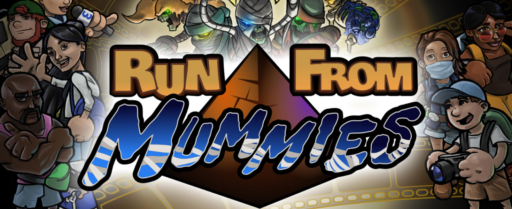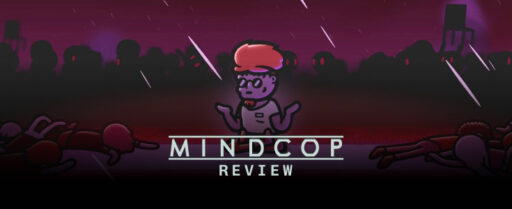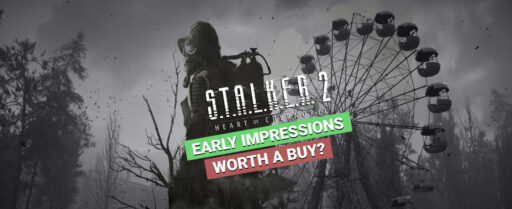Phasmophobia is a cooperative horror game developed and published by Kinetic Games. Since its release in early access in September 2020, the game has gained a cult following, praised for its immersive gameplay, innovative mechanics, and chilling atmosphere. This review will explore all aspects of the game, from its core gameplay to sound design, multiplayer experience, and challenges, making it easy to understand whether this is the game for you.

Let’s explore Phobia’s eerie world and discover what makes it stand out in the horror game genre.
Overview: What is Phasmophobia?
Phasmophobia is a first-person psychological horror game where players take on the role of paranormal investigators tasked with identifying ghosts haunting various locations. The name “Phasmophobia” itself means fear of ghosts, which captures the game’s eerie and atmospheric feel. The game primarily offers multiplayer co-op for up to 4 players, though it also supports solo play for Brave Souls.

The core objective is to explore haunted sites such as houses, schools, and abandoned buildings, gather evidence of paranormal activity using ghost-hunting tools, and determine which type of ghost is lurking inside. However, the ghost isn’t passive. If players aren’t careful, they risk being hunted and killed.
Gameplay Mechanics: Immersive and Thrilling Ghost Hunts
At the heart of Phasmophobia lies its investigative gameplay loop. The players are dropped into various haunted locations equipped with different tools, each with specific uses for detecting paranormal activity. Key tools include:
- EMF Readers: Detect electromagnetic fields that spike during ghost activity.
- Spirit Boxes: Allow communication with ghosts through voice interaction.
- Thermometers: Measure temperature drops to identify freezing conditions.
- Cameras: Capture orbs and other ghostly phenomena.
- Crucifixes and Smudge Sticks: Protective items to ward off or delay ghost attacks.
The game’s brilliance lies in how players interact with these tools. For example, asking questions aloud through the in-game microphone can provoke a ghost to respond. The game uses voice recognition technology, making it feel as if the ghosts are truly aware of your presence.
Phasmophobia rewards teamwork, as players need to share their findings to piece together what kind of entity they are dealing with. The catch? Each ghost behaves differently, forcing players to adapt their strategies based on what they learn during the investigation.
Multiplayer Experience: A Game Best Played with Friends

Phasmophobia’s multiplayer mode is undoubtedly its strongest feature. While it can be played alone, the game truly shines with a group of friends, creating a sense of camaraderie amidst the scares. The need to divide tasks – like one player monitoring cameras from the truck while others search for clues inside the haunted building – encourages teamwork.
Each investigation can feel wildly different based on the following:
- The ghost’s behavior (some are aggressive while others are more subtle).
- Randomized evidence generation, ensuring no two hunts are alike.
- Optional side objectives (like taking a photo of a ghost or preventing a hunt using a crucifix).
The multiplayer element also adds light-hearted moments that balance out the horror, such as accidentally provoking the ghost by saying its name too often or pranking friends with fake noises. This unique blend of tension and humor makes Phasmophobia stand out among multiplayer horror games.
Graphics and Atmosphere: Minimalistic yet Hauntingly Effective

Phasmophobia’s graphics are modest but effective. The game doesn’t rely on hyper-realistic visuals but instead uses dim lighting, narrow hallways, and eerie environments to build tension. Each location is carefully crafted to feel claustrophobic, creating an atmosphere that keeps players on edge.
The use of lighting and shadows plays a huge role in building suspense. Darkened corners, flickering lights, and subtle environmental details force players to rely on flashlights, which often makes them feel vulnerable.
Despite the simplicity of the visuals, the atmosphere is chilling. From the unsettling silence between ghost encounters to the ominous fog on outdoor maps, Phasmophobia makes excellent use of environmental storytelling. The sheer dread of exploring a house in pitch darkness, knowing that death could come at any moment, is the essence of what makes this game special.
Sound Design: Immersion at Its Finest
Phasmophobia’s sound design is one of its most praised elements, and rightly so. Every creak of a door, distant footstep, and flicker of electricity adds to the growing tension. The developers have carefully designed the audio to heighten immersion, making players question every noise they hear.
The game also features proximity-based voice chat, which adds another layer of realism. Players can communicate freely when close to each other, but during ghost hunts, the radio often cuts out, simulating the disruption caused by paranormal interference. Ghosts can even whisper into players’ ears or breathe heavily, creating truly terrifying moments.

Perhaps the most terrifying audio element is the ghost’s hunt sequence. During hunts, the ghost emits a signature sound that varies by type – from eerie singing to frantic growls. The intensity of these sounds, paired with sudden radio silence, leaves players scrambling to find a hiding spot, making every hunt a heart-racing experience.
Types of Ghosts: Diverse and Dangerous Entities

Phasmophobia offers varied ghost types, each with distinct behaviors, strengths, and weaknesses. These include:
- Spirit: Common but dangerous if not handled carefully.
- Poltergeist: Known for throwing objects, making it a noisy and chaotic encounter.
- Phantom: Drains sanity quickly when spotted, making it essential to avoid direct contact.
- Banshee: Targets one player relentlessly during hunts.
- Revenant: Extremely fast, making it a deadly threat if players fail to hide quickly.
Learning about these ghosts through trial and error keeps the game engaging. Since each ghost reacts differently to players’ actions, experimenting with tools and techniques adds depth to the gameplay.
Challenges and Replayability: Endless Opportunities for Scares
One of Phasmophobia’s biggest strengths is its high replay value. No two games are ever identical due to the random nature of ghost behavior, objectives, and evidence. This ensures that players remain hooked even after dozens of hours.
The developers regularly update the game with new ghost types, tools, and maps, keeping the experience fresh. Additionally, difficulty levels allow players to tailor their experience. Higher difficulties introduce:
- Longer hunts.
- Limited tools and equipment.
- Increased ghost aggression.
The constant uncertainty surrounding each encounter ensures that veteran players are still challenged while newer players can gradually build their confidence.
Phasmophobia in VR: An Even Scarier Experience
Phasmophobia supports virtual reality (VR), which takes the game to a whole new level of horror. VR players can perform gestures like manually holding items, which enhances immersion. The physicality of VR makes encounters feel more personal, such as fumbling to light a smudge stick while the ghost inches closer.

Playing in VR also heightens the tension – standing face-to-face with a ghost or hiding inside a closet feels overwhelmingly real. VR mode is not just an optional gimmick but a game-changing experience for those looking to push their horror tolerance to the limit.
Community and Development: A Growing and Engaged Fanbase
Since its release, Phasmophobia has built a dedicated community. Players regularly share ghost-hunting strategies, clips of terrifying encounters, and funny moments on platforms like Reddit, Discord, and YouTube. The game’s popularity has resulted in collaborations, mods, and a thriving streaming presence on platforms like Twitch.
Kinetic Games continues to actively develop and update the game based on community feedback. New ghost types, maps, and quality-of-life improvements keep fans engaged, and the developers are transparent about their roadmap.
Strengths and Weaknesses of Phasmophobia
Pros
- Innovative voice recognition adds depth to gameplay.
- High replayability thanks to randomized evidence and behavior.
- Terrifying sound design that amplifies the horror experience.
- Engaging in multiplayer mode that encourages teamwork.
- Frequent updates with new content and improvements.
Cons
- The steep learning curve for new players unfamiliar with ghost mechanics.
- Solo play can feel overwhelming and less enjoyable compared to multiplayer.
- Graphically modest compared to other modern horror titles.
- Occasional bugs and glitches, as it’s still in early access.
Summary: Is Phasmophobia Worth Your Time?
Phasmophobia offers a truly unique multiplayer horror experience. Its innovative gameplay, sound design, and atmospheric tension make it one of the most engaging co-op games in recent years. Whether you’re playing with friends or tackling ghosts solo, the game delivers an adrenaline-fueled experience that will keep you on the edge of your seat.
While the game is still in early access, the frequent updates and active community indicate a promising future. If you enjoy games that mix investigation, teamwork, and scares, Phasmophobia is a must-play title.
Frequently Asked Questions About Phasmophobia
Q: Can Phasmophobia be played solo?
Yes, but the experience is far more intense and challenging without teammates. The game is designed to encourage cooperation, making multiplayer the recommended way to play.
Q: How scary is Phasmophobia?
Phasmophobia is genuinely terrifying, especially during ghost hunts. The combination of sound design
Enjoyed the read? Check out our blog for more great content and don’t forget to leave a comment below!



